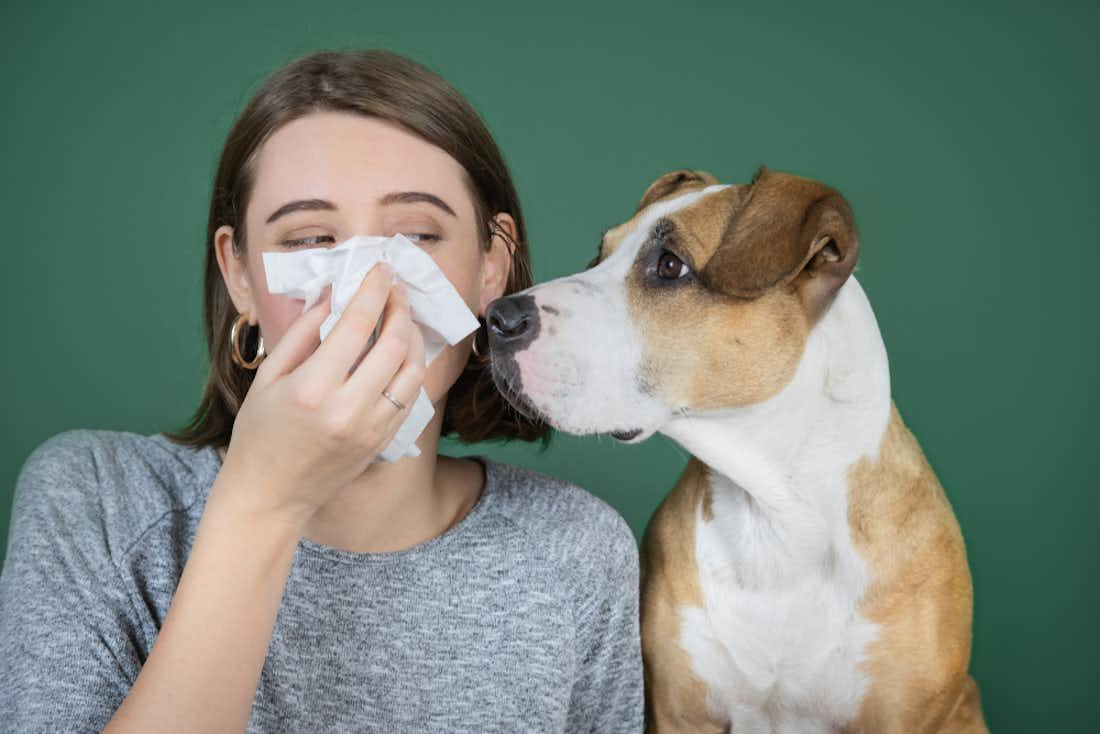Jul 7, 2022
How To Test for Food Allergies
5 minute read
Milk, fish, eggs, and peanuts are supposed to make your tummy feel full and happy -- not close up your throat and make it hard to breathe. But for some people, food allergies are enough to make the simple act of eating a life-threatening endeavor.
While it might be tempting to pop in another peanut to see if it causes a flare-up, there are much more effective (and safe) ways to see if you’re allergic. And none of them involve putting your life in danger.
If you’re ready to finally figure out what secret ingredient is making you feel miserable, now’s a better time than any. Here’s how to test for food allergies.
What Are Food Allergies?
Food allergies occur when your immune system wrongfully identifies proteins found in food as harmful substances and deploys mechanisms to “attack” it. Then, your body overreacts and causes symptoms like wheezing or shortness of breath.
Almost any food can cause an allergic reaction, but the eight most common are:
- Milk
- Soy
- Tree nuts
- Shellfish
- Egg
- Wheat
- Fish
While it’s unknown exactly what causes someone to have a food allergy, having a family member with a food allergy can increase the risk of developing one by nearly 1.5 times.
Additionally, having asthma or another respiratory illness can worsen the symptoms of food allergies.
Food allergies are different from food intolerances. Food allergies are immune responses that can be life-threatening, but food intolerances are generally milder and are mostly limited to digestive problems, like nausea, stomach pain, or diarrhea, rather than severe allergic reactions.
Types of Food Allergy Tests
Allergists can help you determine which foods, or other allergen triggers, are causing you some trouble. There are a few different ways that you can get a food allergy diagnosis.
Scratch Test (Skin Prick Test)
If you mosey on down to the allergy clinic and ask them for an allergy test, it’s likely that the scratch test is what your health care provider will administer. This is often considered the golden standard for allergy testing, and it’s pretty quick and painless.
Scratch tests are done by gently pricking an area of your skin (usually the forearm) with a small needle called a lancet that barely penetrates the skin. Then, a drop of allergen extract is placed in the testing area.
After about 15 to 20 minutes, the allergist will examine the testing area to see how you made out. A positive test result is indicated by a raised, red bump on the skin called a wheal. Typically, larger wheals indicate more serious reactions.
These bumps are caused by IgE antibodies produced by the immune system when confronted with an allergen.
An allergist can test for multiple different allergies at the same time with a skin test. This is useful if you’re not sure exactly what’s causing you to react. For instance, they can check for peanut allergies simultaneously as wheat allergies to see if it’s the peanut butter or the toast that’s causing your breakfast routine to feel uncomfortable.
Blood Test
Blood tests are another effective way of finding out if you have a food allergy. These are done by taking a blood sample and examining the amount of IgE antibodies or igg antibodies within to examine your immune system’s response. Blood samples can be taken to a lab where antibodies for certain foods are compared for food allergies. A higher number of IgE antibodies typically means you’d have a more severe reaction to the substance.
You used to have to take a trip to the allergist to get this test done, but with Cleared’s at-home allergy test kit, you can do it right from the comfort of your living room. All it takes is a little prick on your finger to bring you a whole lot of clarity and accurate results.
Blood tests are quick, simple, and effective. Plus, they’re a lot quicker than skin tests and can give you a more accurate idea of just how severe your food allergies might be.
Challenge Test (Provocation Test)
If a skin prick test and a blood test prove ineffective at figuring out what’s causing your food allergy, the next step is typically an oral food challenge test or food sensitivity test.
For a challenge test, a physician will administer a small amount of the suspected food allergen orally. Gradually, they may continue to give you more of the food to see if you have a physical reaction. If you don’t, you might not be allergic after all.
Challenge tests can be dangerous, as they run the risk of causing anaphylaxis. This is a severe and potentially life-threatening reaction to an allergen. That’s why these tests must be done in the presence of an allergist who can administer a shot of epinephrine if need be.
Your allergist may give you a physical exam during the test and afterward to ensure no life-threatening reactions are present.
Elimination Diet
While this is not necessarily a test, it’s a tool that an allergist can use in addition to these to find out if a specific food is a reason for some of your symptoms. With an elimination diet, you’ll be advised to avoid eating a specific food for one to two weeks to see if you get a reaction.
If you don’t, it’s possible that you can pinpoint the food that’s giving you some trouble. The only problem is that an elimination diet can’t distinguish between a true food allergy or just a food sensitivity, like lactose intolerance or celiac disease. With that said, this is a safe method that you can try yourself to gain some clarity to see if avoiding certain foods makes you feel better.
Treating Food Allergies
Unfortunately for individuals with food allergies, there is currently no known cure for them. The only real way to prevent an allergic reaction is by avoiding the substances that cause it. This can be easy with things like shellfish, but avoiding other foods like peanuts or milk can be a lot more difficult.
The good news is that the Food Allergy Labeling and Consumer Protection Act mandates that manufacturers list the nine most common allergens in their products, even if it’s only an incidental ingredient used in the same factory.
Also, many people can outgrow specific allergies once they reach adulthood. According to the Mayo Clinic, 60 percent to 80 percent of children can outgrow milk or egg allergies by the time they hit age 16. But the outlook for tree nuts and shellfish is a little less positive, with only about 14 percent to 20 percent of children outgrowing them.
Just because you have a food allergy doesn’t mean you can’t still enjoy your favorite foods. With dairy alternatives and vegan options becoming more accessible, you can cook up some mac and (non-dairy) cheese or a gluten-free sandwich.
Food for Thought
Food allergies affect about 4 percent of the adult population, and they occur when your immune system wrongfully perceives the proteins in certain foods as harmful. This can make harmless little bites such as eggs, fish, or peanuts a potentially life-threatening meal.
Food allergies bear many similarities to food intolerances, but the former is typically much more serious. That’s why it’s important to get tested so you can know what might cause some issues. Ways to test food allergies include skin prick tests, blood tests like an igg test, challenge tests, and elimination diets.
If food allergies, or any allergies, are making you miserable, it’s time for a change. Cleared has everything from allergy medications to immunotherapy, all for some of the lowest prices on the market.
Your online allergist is in. Take your free 5-minute allergy quiz and take a breath of fresh air. Literally.
Sources:
Food allergy vs. food intolerance: What's the difference? | The Mayo Clinic
Allergy skin tests | The Mayo Clinic
Immunoglobulin E (IgE) Defined | AAAAI
Anaphylaxis - Symptoms and causes | The Mayo Clinic
Likelihood of Child Outgrowing Food Allergy Depends of Type, Severity of Allergy | The Mayo Clinic
Authors

Dr. Payel Gupta
Medically reviewed by Dr. Payel Gupta



